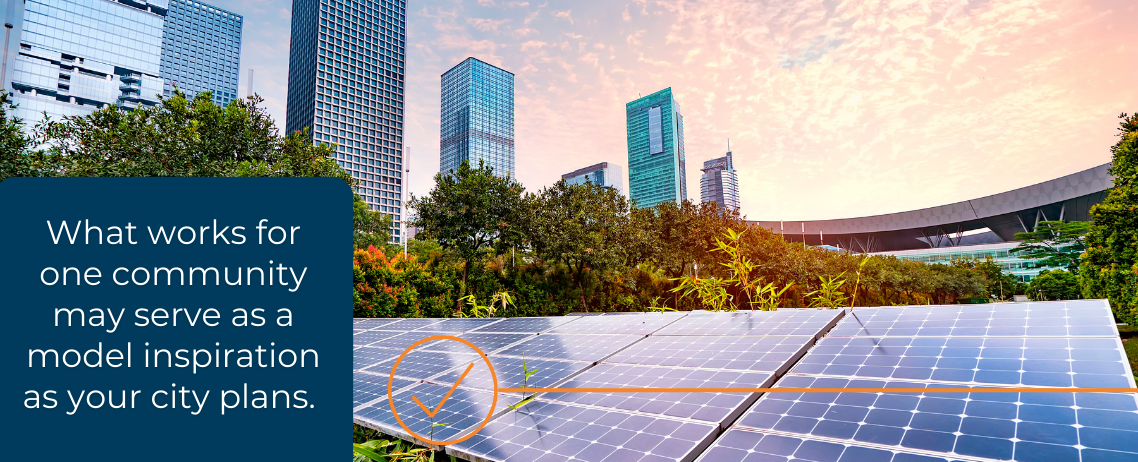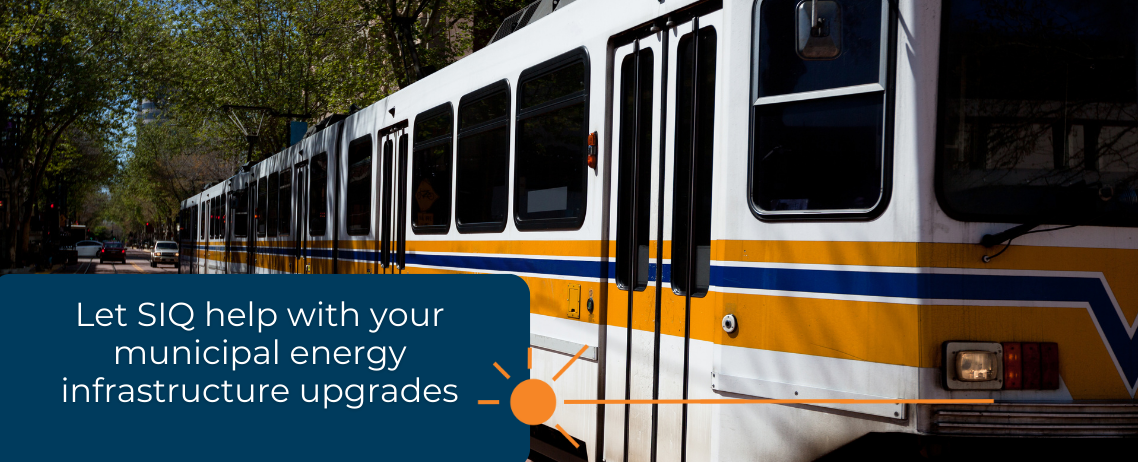
Local government facilities managers understand the risks of aging infrastructure, and the headaches and expenses it causes when issues arise. Planning for the long-term is critical to ensure you’re equipped for municipal energy infrastructure upgrades that require significant funding, especially when working with a limited budget.
With municipal energy planning, you can take the first step toward a more modern and energy efficient infrastructure for your local community. These upgrades can help your city meet environmental milestones by reducing its energy consumption, increase your renewable energy generation, work towards achieving net zero building emissions, and support greater grid stability and resiliency. Upgrading your energy infrastructure has far reaching impact for both your facility and the municipality you serve. Knowing where to start can feel overwhelming, so our experts have laid out the foundation to help kick-start your municipal energy infrastructure planning.
How to Plan Energy Infrastructure Upgrades
Use the planning phase to gather the right information and set up your municipality or local governance for success. Here are some steps to help you plan for your infrastructure upgrades.
Understand Current Energy Usage and Potential Future Growth
You first need to understand your current energy usage to know how far you have to go and measure your improvements over time. To do this, you must identify each energy usage point in your municipality and record this usage for at least a year. This record provides a solid baseline for identifying anomalies, savings, and opportunities for improvements and future growth.
You can gather data in one of two ways to help you better understand your current energy use. The first is to ask your current energy suppliers for a two- or three-year history of your payments with monthly breakdowns for even more detail, if possible. Another option is to pull fuel and utility invoice files yourself from the past few years. Either way, once you have the data from the invoices, put it into a spreadsheet for a helpful look at your energy usage.
Create Energy Efficiency Goals
To better understand how to move forward, you need to create energy efficiency goals to strive toward. Every municipality has different goals depending on where they are on the journey toward sustainability and greater energy efficiency. One of the best ways to define your own goals is to use the following SMART formula:
- Specific: Your goals should include enough specificity that you know exactly how to start toward them and focus on them.
- Measurable: You must be able to measure outcomes as you approach your goal. The completed goal should be something you can measure related to your starting point, like dollars spent or kilowatt-hours of electricity used.
- Achievable: It’s good to set goals that will challenge you to achieve the best results possible, but you also want to ensure your goals are realistic. Set achievable goals your team can confidently work toward, knowing it is possible to accomplish them.
- Relevant: Your energy efficiency goals should focus on specific parts of your plan. Keep them as related to your desired outcomes as possible to remain efficient as you move forward.
- Time-sensitive: The best goals to set are ones that you must accomplish within a certain timeframe. You can give yourself some buffer room if you need more time, but having a deadline will encourage everyone involved to do their best to achieve your energy facilities upgrade goals.
Evaluate What Other Similar Communities Are Doing
You can gain useful insight into how you should plan for your municipal energy infrastructure upgrades by seeing what comparable communities are doing for their upgrades. Many communities are doing similar things when upgrading their energy systems. What works for another community may work for yours or at least serve as an inspiration as you continue planning.

Here are some commonalities you may find as you evaluate other communities:
- Gathering information and using the data you uncover to inform decisions
- Developing partnerships at local utilities to encourage cooperation
- Being persuasive and persistent when presenting issues to lawmakers, stakeholders, organizations, and other entities
- Starting small and documenting successes to pave the way for the next phases
- Building momentum off your successes
Develop an Energy Efficiency Checklist
An energy efficiency checklist can help you stay on track while visually representing the tasks you need to accomplish toward your municipality’s goals. Your checklist can be as general or specific as you want it to be, but you should consider including the following:
- Energy policies: Define your energy policies to address conservation and efficiency issues relating to green purchasing, water usage, and green jobs.
- Energy use for government facilities: Your own municipal and governmental facilities consume significant energy. These facilities include office buildings, wastewater treatment plants, public schools, and courthouses. Include ways to reduce energy consumption at these facilities in the checklist and seek more renewable options.
- Energy leadership in local communities: Your checklist should also outline how you will encourage local leaders to take charge in influencing the community’s attitudes toward energy efficiency and sustainability and how those concepts relate to infrastructure upgrades.
Assess Energy Efficiency Options
Energy efficiency involves saving energy and applying sophisticated technology to reduce energy use. You should assess all energy efficiency options at your disposal to determine which would be the best fit for the needs and goals of your upgrade plan. This assessment is a more scientific approach to your municipality’s energy infrastructure upgrades.
You can also approach your energy efficiency options through a behavioral lens. Consider how your community, stakeholders, and employees will respond to proposed changes. You need people to behave differently to conserve energy, so many energy efficiency options must start with the buy-in and cooperation of the entire community.
Understand the Potential Outcome of Energy Upgrades
The final step of the planning process should be fully understanding the potential outcomes of implementing your energy upgrades. One way to understand the possible outcomes is to see how other communities that have already implemented similar municipal energy upgrades are operating.
Whether you’re considering the outcomes of energy upgrades to your facilities, lighting systems, or transportation systems, keeping your goals in mind will help guide you through the last stages of the planning process. Then you will be ready to begin implementing the changes, starting small and keeping momentum after every success.
How SitelogIQ Can Help
SitelogIQ offers facility energy solutions and management nationwide. We can help with the planning, design, and practical solutions needed for your municipality as you seek to build more efficient, smarter work environments. We have experience in several industries, including state and local government facilities, so you can trust that we will deliver the best results possible.

Our energy solutions include:
- Energy analytics: We provide data-driven energy optimization solutions for the best results.
- Energy audit: We can provide the data and analysis you need for successful implementation with our energy audit services.
- Energy generation: With our energy generation services, you can reduce your facility’s reliance on fossil fuels and the power grid.
- Energy & greenhouse gas tracking/reporting: As a partner providing energy management services, we know what’s needed to track and reduce your facility’s GHG emissions.
- Energy storage: Our energy storage solutions can give you more peace of mind in the face of power outages or energy irregularities.
Let SitelogIQ Help With Your Municipal Energy Infrastructure Upgrades
SitelogIQ is ready to help with your municipal energy planning and implementation needs. Contact us today to take the next step or browse our solutions online to learn more about how we can help you meet your goals for your municipality facilities.



